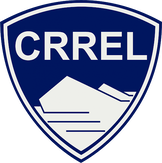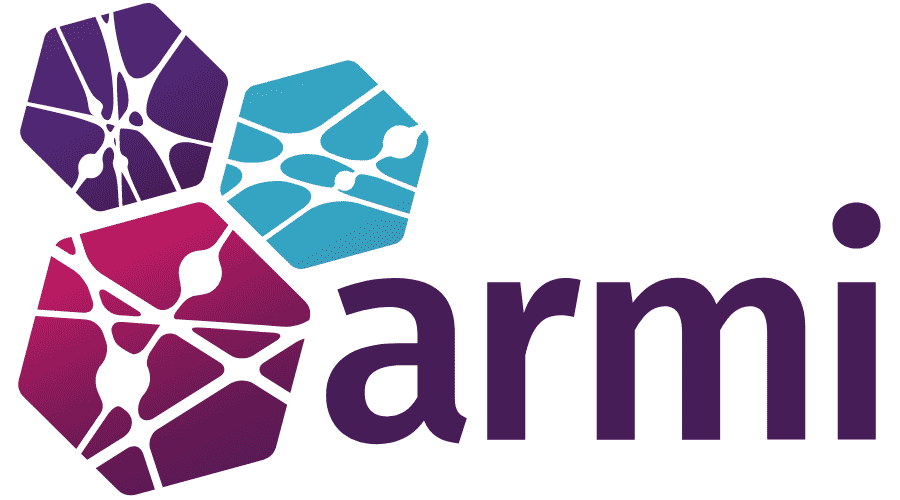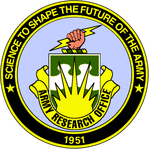Research in the Mirica Group at Dartmouth College focuses on addressing modern challenges in healthcare, environmental stewardship, and microelectronics through innovations in Materials Chemistry. The experimental strategy emphasizes molecular design and synthesis of responsive materials using self-assembly. The molecular design often features the use of strategically chosen molecular components to achieve emergent function in the solid-state that is greater than the sum of the parts. An important aspect of research in the group is a feedback loop between fundamental and applied science, where the fundamental understanding of interactions of small molecules with responsive materials is used, probed, and refined in functional devices. Materials and methods developed in the group may also be applicable to information storage, energy storage, and catalysis. Selected research thrusts within the group are highlighted below.
Our Sponsors
Thrust 1: Multifunctional Materials for Chemical Sensing
The long-term goal of this research thrust is to produce responsive materials for deployment in mobile electronic chemical sensors that enable continuous electroanalysis. The molecular design of materials relies on the use of conductive metal-organic frameworks (MOFs) and covalent organic frameworks (COFs) in electrically-transduced sensing architectures. This thrust aims to develop: (i) novel synthetic methodologies for the fabrication of nanoscale electronic sensing materials with unprecedented precision and chemical control over structure and function, (ii) rigorous control and examination of structure-property relationships in the solids state and (iii) ultra-sensitive detection of biological metabolites, neurotransmitters, and environmental pollutants. This research thrust seeks to advance the fundamental understanding of novel multifunctional materials through a focus on bottom-up assembly of MOFs and COFs. This work will provide significant insight into molecular design, controlled synthesis, understanding of structure-property relationships, and new methods for device integration of MOF and COF-based sensing technologies.
Selected Publications:
Ko, M.; Mendecki, L.; Eagleton, A.; Durbin, C. G.; Stolz, R. M.; Meng. Z.; Mirica, K. A.* “Employing Conductive Metal–Organic Frameworks for Voltammetric Detection of Neurochemicals” J. Am. Chem. Soc. 2020, 142, 11717–11733.
Stolz, R. M.; Mahdavi-Shakib, A.; Frederick, B. G.*; Mirica, K. A.* "Host–Guest Interactions and Redox Activity in Layered Conductive Metal–Organic Frameworks" Chem. Mater. 2020, 32, 7639–7652.
Meng, Z.; Stolz, R. M.; Mirica, K. A.* “Two-Dimensional Chemiresistive Covalent Organic Framework with High Intrinsic Conductivity” J. Am. Chem. Soc. 2019, 141, 11929-11937.
Meng, Z.; Aykanat, A.; Mirica, K. A.* “Welding Metallophthalocyanines into Bimetallic Molecular Meshes for Ultra-Sensitive, Low-Power Chemiresistive Detection of Gases” J. Am. Chem. Soc. 2019, 141, 2046-2053.
Mendecki, L; Mirica, K. A.* "Conductive Metal–Organic Frameworks as Ion-to-Electron Transducers in Potentiometric Sensors" ACS Appl. Mater. Interfaces 2018, 10, 19248–19257.
Smith, M. K.; Mirica, K. A.* "Self-Organized Frameworks on Textiles (SOFT): Conductive Fabrics for Simultaneous Sensing, Capture, and Filtration of Gases" J. Am. Chem. Soc. 2017, 139, 16759–16767.
Smith, M. K.; Jensen, K. E.; Pivak, P. A.; Mirica, K. A.* "Direct Self-Assembly of Conductive Nanorods of Metal-Organic Frameworks into Chemiresistive Devices on Shrinkable Polymer Films" Chem. Mater. 2016, 28, 5264–5268.
Ko, M.; Mendecki, L.; Eagleton, A.; Durbin, C. G.; Stolz, R. M.; Meng. Z.; Mirica, K. A.* “Employing Conductive Metal–Organic Frameworks for Voltammetric Detection of Neurochemicals” J. Am. Chem. Soc. 2020, 142, 11717–11733.
Stolz, R. M.; Mahdavi-Shakib, A.; Frederick, B. G.*; Mirica, K. A.* "Host–Guest Interactions and Redox Activity in Layered Conductive Metal–Organic Frameworks" Chem. Mater. 2020, 32, 7639–7652.
Meng, Z.; Stolz, R. M.; Mirica, K. A.* “Two-Dimensional Chemiresistive Covalent Organic Framework with High Intrinsic Conductivity” J. Am. Chem. Soc. 2019, 141, 11929-11937.
Meng, Z.; Aykanat, A.; Mirica, K. A.* “Welding Metallophthalocyanines into Bimetallic Molecular Meshes for Ultra-Sensitive, Low-Power Chemiresistive Detection of Gases” J. Am. Chem. Soc. 2019, 141, 2046-2053.
Mendecki, L; Mirica, K. A.* "Conductive Metal–Organic Frameworks as Ion-to-Electron Transducers in Potentiometric Sensors" ACS Appl. Mater. Interfaces 2018, 10, 19248–19257.
Smith, M. K.; Mirica, K. A.* "Self-Organized Frameworks on Textiles (SOFT): Conductive Fabrics for Simultaneous Sensing, Capture, and Filtration of Gases" J. Am. Chem. Soc. 2017, 139, 16759–16767.
Smith, M. K.; Jensen, K. E.; Pivak, P. A.; Mirica, K. A.* "Direct Self-Assembly of Conductive Nanorods of Metal-Organic Frameworks into Chemiresistive Devices on Shrinkable Polymer Films" Chem. Mater. 2016, 28, 5264–5268.
Thrust 2: Molecular Solids as Sublimable Adhesives
Fundamental understanding of the bulk and interfacial properties of molecular solids is crucial for enhancing the efficacy of pharmaceutical compounds, maximizing the safety of energetic materials, improving the performance of organic electronic devices, reducing ice adhesion and accretion on surfaces, and preventing aberrant biological crystallization. Over the past 50 years, advances in crystal engineering, surface science, and supramolecular chemistry have provided substantial insight into the structure-property relationships of molecular solids. Despite this progress, the fundamental understanding of mechanical, adhesive, and thermodynamic properties of molecular solids remain incomplete, and limited molecular design criteria exist for realizing multifunctional emergent behavior of small molecules in the solid-state. Overcoming these knowledge gaps through basic research—motivated by modern technological challenges that demand new function—has the potential to advance the fundamental understanding of structure-property relationships in molecular solids and enhance the broad utility of these materials.
This research program focuses on the fundamental study of bulk and interfacial properties of molecular solids. The overarching goal in this research is to design and investigate molecular solids as “sublimable adhesives”: a unique class of multifunctional materials that exhibit exceptional mechanical and adhesive properties in the solid state, but have the characteristic of being rapidly removable on-demand by sublimation without the application of solvent or applied mechanical force. The need for designing and investigating this class of materials is motivated by a current technological challenge in 3D microelectronics: the inability to obtain, handle, process, and stack thin (below 20 micrometers in thickness) functional surfaces. Practical implementation of sublimable adhesives has the potential to fill this need.
This research program focuses on the fundamental study of bulk and interfacial properties of molecular solids. The overarching goal in this research is to design and investigate molecular solids as “sublimable adhesives”: a unique class of multifunctional materials that exhibit exceptional mechanical and adhesive properties in the solid state, but have the characteristic of being rapidly removable on-demand by sublimation without the application of solvent or applied mechanical force. The need for designing and investigating this class of materials is motivated by a current technological challenge in 3D microelectronics: the inability to obtain, handle, process, and stack thin (below 20 micrometers in thickness) functional surfaces. Practical implementation of sublimable adhesives has the potential to fill this need.
Selected Publications:
Blelloch, N. D.; Mitchell, H. T.; Tymm, C. C.; Van Citters, D. W.; Mirica, K. A.* “Crystal Engineering of Molecular Solids as Temporary Adhesives” Chem. Mater. 2020, In Press.
Mitchell, H. T.; Smith, M. K.; Blelloch, N. D.; Van Citters, D. W.; Mirica, K. A.* "Polycyclic Aromatic Hydrocarbons as Sublimable Adhesives" Chem. Mater. 2017, 29, 2788–2793.
Blelloch, N. D.; Mitchell, H. T.; Tymm, C. C.; Van Citters, D. W.; Mirica, K. A.* “Crystal Engineering of Molecular Solids as Temporary Adhesives” Chem. Mater. 2020, In Press.
Mitchell, H. T.; Smith, M. K.; Blelloch, N. D.; Van Citters, D. W.; Mirica, K. A.* "Polycyclic Aromatic Hydrocarbons as Sublimable Adhesives" Chem. Mater. 2017, 29, 2788–2793.
Thrust 3: Electroactive Materials for Environmental Stewardship
Manufacturing of commodity plastics, such as polyethylene and polypropylene, requires energy-efficient access to raw petrochemicals—ethylene and propylene—essential for their production. However, traditional industrial methods for the manufacturing of alkenes using either steam or catalytic cracking of petroleum-based feedstocks, followed by purification using cryogenic distillation, are heavily energy-intensive and operationally-demanding processes. The energy penalty associated with the separation for ethylene and propylene alone, accounts for 0.3% of total worldwide energy consumption, which is comparable to the annual energy demand of Singapore. Alternatives to cryogenic distillation that rely on the reversible binding of alkenes with transition metal complexes can improve energy-efficiency, but suffer from poisoning by H2, C2H2, CO, and H2S gases. Growing concerns regarding energy consumption and environmental stewardship, demand improved efficiency in the use of petrochemical resources through fundamental research and technological innovation.
This research program focuses on the design and synthesis of conductive solid-state materials for enabling electrochemically-actuated, energy-efficient, and environmentally-conscious chemical processes involving purification and chemical transformations of alkenes. The molecular design features d-π conjugated, conductive, electrochemically active, porous solid-state metal-organic frameworks (MOFs) capable of undergoing electrochemically-actuated reversible chemical reactions with alkenes. The impact of this research will contribute to the advancement of energy-efficient and environmentally-conscious strategies for the purification and separation of alkenes from raw feedstocks and the development of new catalytic strategies. This research will lead to fundamental insights into the chemical reactivity of organometallic complexes with alkenes in the context of reaction kinetics, thermodynamics, and selectivity. Materials and methods generated through this research may also contribute to efficiency of food production through detection and sequestration of ethylene in the context of controlling fruit ripeness, and development of catalytic applications for chemical energy conversion processes.
This research program focuses on the design and synthesis of conductive solid-state materials for enabling electrochemically-actuated, energy-efficient, and environmentally-conscious chemical processes involving purification and chemical transformations of alkenes. The molecular design features d-π conjugated, conductive, electrochemically active, porous solid-state metal-organic frameworks (MOFs) capable of undergoing electrochemically-actuated reversible chemical reactions with alkenes. The impact of this research will contribute to the advancement of energy-efficient and environmentally-conscious strategies for the purification and separation of alkenes from raw feedstocks and the development of new catalytic strategies. This research will lead to fundamental insights into the chemical reactivity of organometallic complexes with alkenes in the context of reaction kinetics, thermodynamics, and selectivity. Materials and methods generated through this research may also contribute to efficiency of food production through detection and sequestration of ethylene in the context of controlling fruit ripeness, and development of catalytic applications for chemical energy conversion processes.
Selected Publications:
Meng, Z.; Luo, J.; Li, W.*; Mirica, K. A.* “Two-Dimentional Bimetallic Metallophthalocyanine based Metal−Organic Frameworks for High-Performance Electrochemical Carbon Dioxide Reduction” J. Am. Chem. Soc. 2020, In Press.
Meng, Z.; Aykanat, A.; Mirica, K. A.* “Proton Conduction in 2D Aza-Fused Covalent Organic Frameworks” Chem. Mater. 2019, 31, 819-825.
Mendecki, L.; Ko, M.; Zhang, X.; Meng, Z.; Mirica, K. A.* "Porous Scaffolds for Electrochemically Controlled Reversible Capture and Release of Ethylene" J. Am. Chem. Soc. 2017, 139, 17229–17232.
Meng, Z.; Luo, J.; Li, W.*; Mirica, K. A.* “Two-Dimentional Bimetallic Metallophthalocyanine based Metal−Organic Frameworks for High-Performance Electrochemical Carbon Dioxide Reduction” J. Am. Chem. Soc. 2020, In Press.
Meng, Z.; Aykanat, A.; Mirica, K. A.* “Proton Conduction in 2D Aza-Fused Covalent Organic Frameworks” Chem. Mater. 2019, 31, 819-825.
Mendecki, L.; Ko, M.; Zhang, X.; Meng, Z.; Mirica, K. A.* "Porous Scaffolds for Electrochemically Controlled Reversible Capture and Release of Ethylene" J. Am. Chem. Soc. 2017, 139, 17229–17232.











